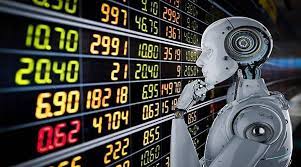In the fast-paced world of foreign exchange (forex) trading, where every second counts and market movements can change in the blink of an eye, traders are constantly seeking ways to gain an edge. One such technological advancement that has gained significant traction in recent years is the forex robot. These automated trading systems promise to revolutionize the way traders approach the forex market, offering the potential for increased efficiency, reduced emotional bias, and enhanced profitability. But what exactly are forex robots, and how do they work?
Understanding Forex Robots
Forex robots, also known as expert advisors (EAs), are computer programs designed to execute trades on behalf of traders in the forex market. These algorithms are based on predefined trading strategies and parameters, which are programmed into the software by developers or traders themselves. The primary goal of forex robots is to identify trading opportunities and automatically execute buy or sell orders according to the specified criteria, without the need for human intervention.
How Forex Robots Work
Forex robots operate by analyzing market data, such as price charts, technical indicators, and economic news releases, to identify potential trading signals. Based on the predefined rules and parameters, the robot will then determine whether to enter or exit a trade. These rules can vary widely, ranging from simple moving average crossovers to complex mathematical algorithms.
Once a trading signal is generated, the forex robot will execute the corresponding trade in real-time, typically through a broker’s trading platform. Some advanced robots may also incorporate risk management techniques, such as stop-loss and take-profit orders, to mitigate potential losses and maximize profits.
Advantages of Forex Robots
- 24/7 Trading: Unlike human traders who need rest, forex robots can operate around the clock, taking advantage of trading opportunities in different time zones.
- Emotion-Free Trading: Emotions such as fear and greed can often cloud judgment and lead to irrational trading decisions. Forex robots operate based on predefined rules, eliminating the influence of emotions from the trading process.
- Backtesting and Optimization: Forex robots can be backtested using historical market data to assess their performance under various market conditions. This allows traders to fine-tune their strategies and optimize their robots for better results.
- Speed and Efficiency: With lightning-fast execution speeds, forex robots can enter and exit trades in a fraction of a second, ensuring that traders capitalize on market opportunities without delay.
- Diversification: Traders can use multiple forex robots simultaneously, each employing different strategies or trading instruments, to diversify their trading portfolio and spread risk.
Challenges and Risks
While forex robots offer several advantages, they are not without their challenges and risks. Some of the key considerations include:
- Over-Optimization: Excessive backtesting and optimization can lead to overfitting, where the robot performs well on historical data but fails to adapt to changing market conditions.
- Technical Issues: Forex robots are reliant on technology and may encounter technical glitches or connectivity issues, potentially resulting in missed trades or errors.
- Market Volatility: Extreme market volatility can cause forex robots to execute trades erratically or incur significant losses, especially if the underlying trading strategy is not robust enough to handle sudden price movements.
- Lack of Adaptability: While forex robots can be programmed to handle specific market conditions, they may struggle to adapt to unforeseen events or anomalies that fall outside their predefined parameters.
Conclusion
Forex robots represent a powerful tool for traders looking to automate their trading activities and potentially increase their profitability in the forex market. By leveraging advanced algorithms and technology, these automated systems offer the promise of efficient, emotion-free trading around the clock. However, traders must exercise caution and conduct thorough research before deploying forex robots, as they come with their own set of challenges and risks. Ultimately, the successful integration of forex robots into a trading strategy requires a combination of technical expertise, diligent testing, and prudent risk management.




